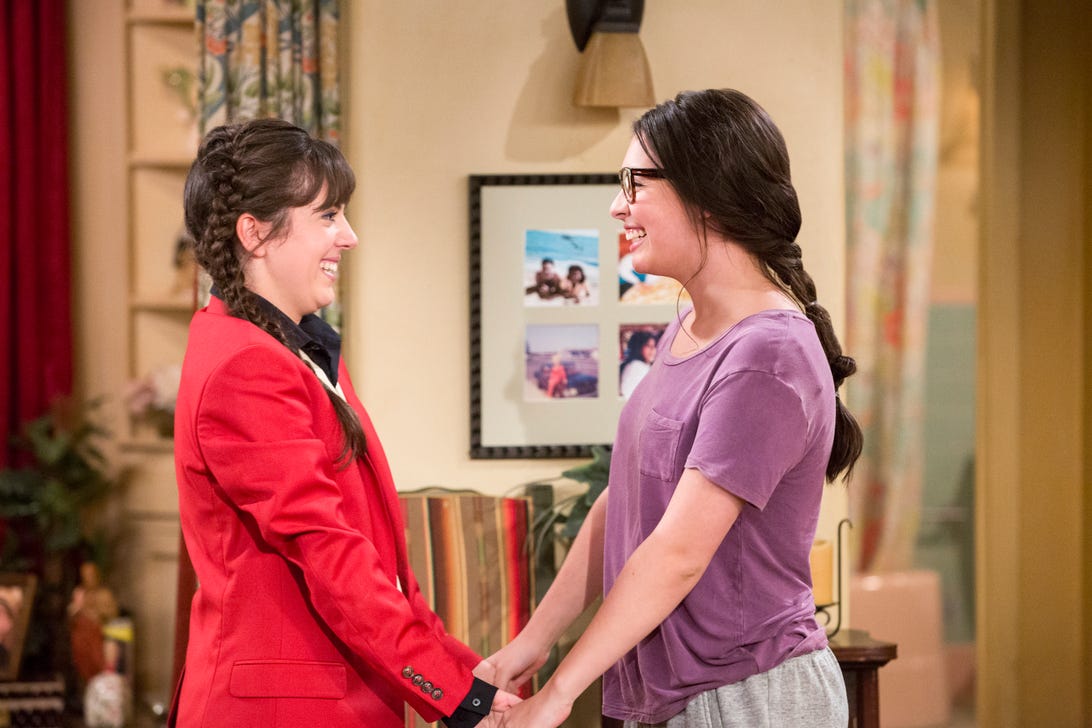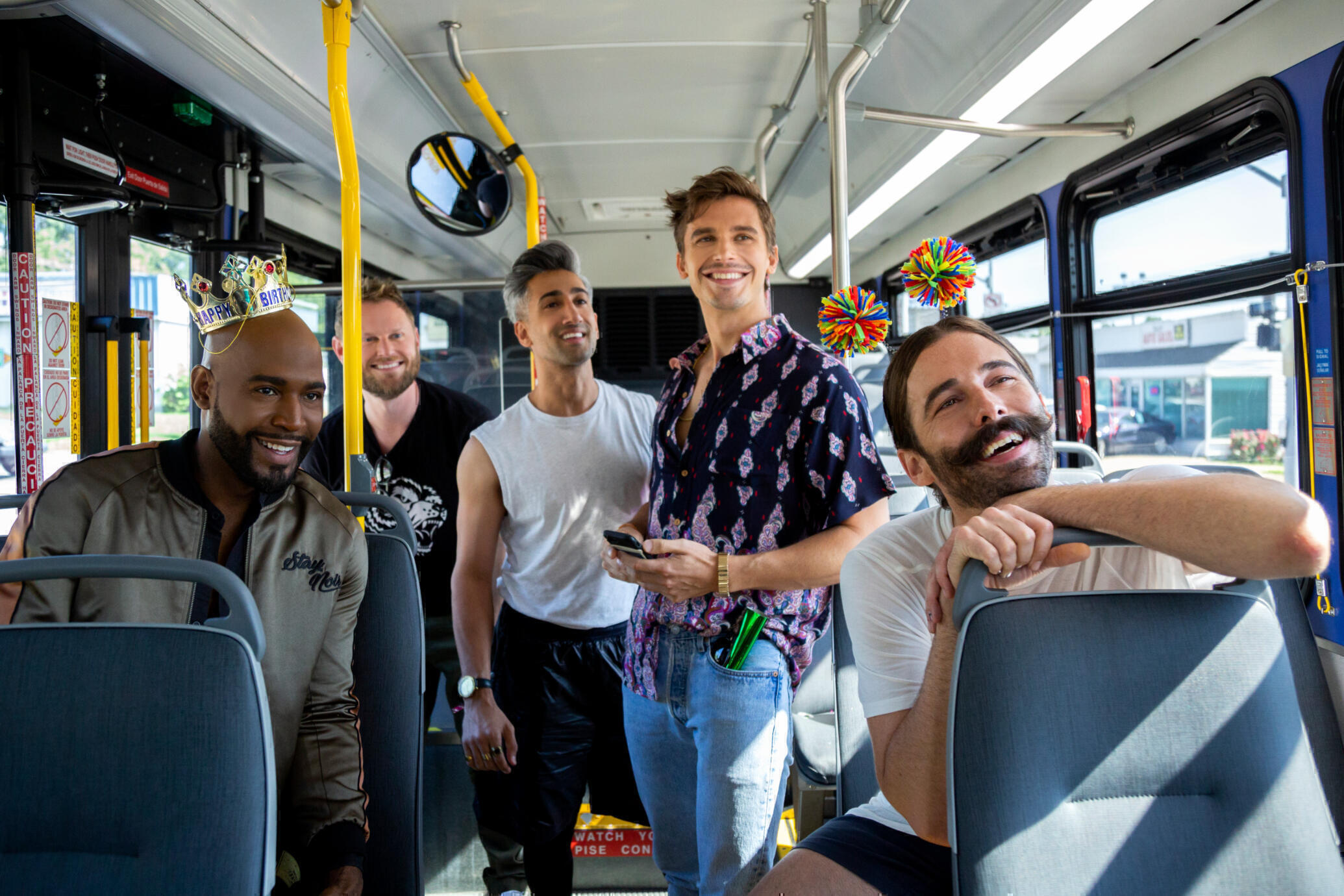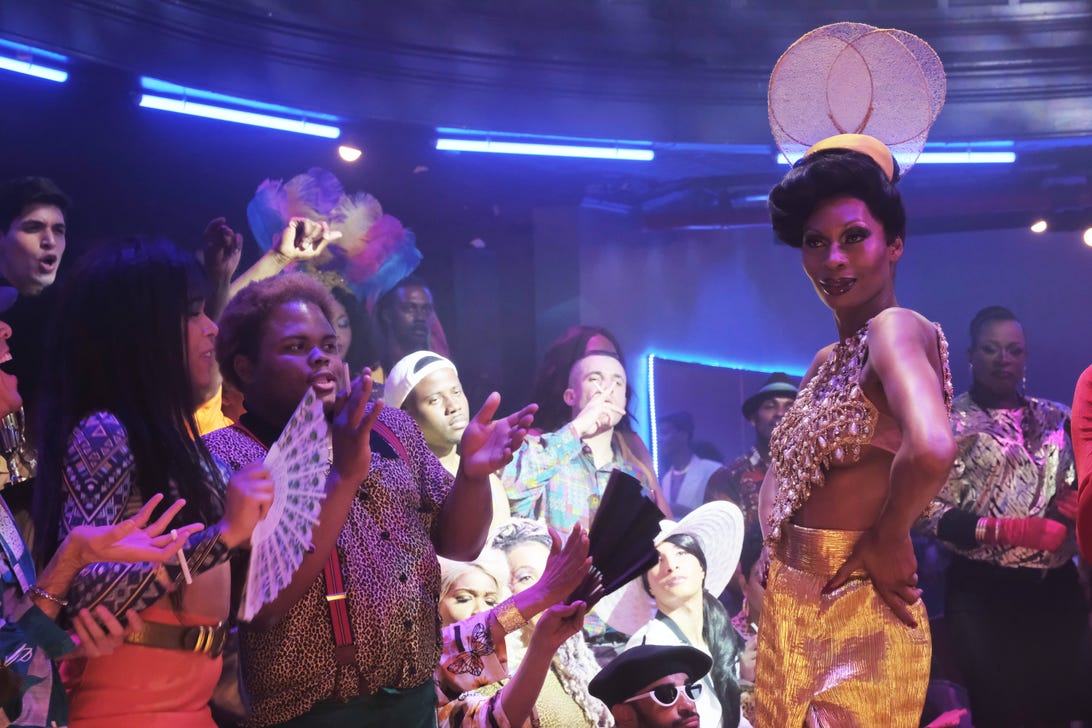
Finally, Queer Joy Is Infiltrating TV
Queer stories can be more than just trauma and tragedy.
In 2003, Degrassi: The Next Generationaired a two-part episode titled "Pride," in which high schooler Marco (Adamo Ruggiero) came out as gay to one of his friends. Viewers already knew about Marco's sexuality, but it remained a secret to the rest of the school, mostly because Marco feared their reactions. In "Pride," after an uncomfortable date, an overwhelmed Marco ends up spontaneously coming out to his friend Spinner (Shane Kippel), the school's bully, who doesn't exactly take the news well. Then, in the episode's second part, a group of homophobic men jump Marco, leaving him bleeding on the ground.
It was easy to see where it was going from the first few minutes -- Degrassi thrived on the Very Special Episode format and teasing out these big moments -- and easy to understand why the series went this route. But it was also disappointing. Degrassi was my favorite show at the time (it probably still is) and Marco was one of the first real, well-rounded LGBTQ characters I ever saw on television. There were other queer characters, of course, in the episodes of Undressed I secretly watched, or John Waters in The Simpsons, or Will & Grace (a show I didn't watch, but certainly had heard of). But for the most part, representation seemed to consist mainly of stereotypical gay men used as punchlines in one-off episodes of '90s sitcoms. (Plus, much of this went over my young head.) With Marco, however, I was old enough to understand the storyline surrounding his sexuality -- and the storyline surrounding my own.
I continued to see numerous TV scenes similar to Marco's gay bashing. I saw teenagers kicked out of their houses, trans characters beaten, and lesbians unceremoniously killed off. Going off nothing but media, I learned that being queer meant having an entire life rooted in secrets, trauma, violence, and self-hatred.
While there are some truths found in these narratives, there's also truth to the opposite: queerness also includes fun, joy, community, crushes, first kisses, and so on. But for a long time it seemed like television wasn't aware of this, or, at least, didn't care enough to show it. Which is why it's been wonderful -- and affirming -- to see happier, funnier, and more casual portrayals of queerness on television lately.
Co-created by father and son duo Eugene and Dan Levy, Pop's Schitt's Creek follows the wealthy Rose family as they lose everything -- except for a small town that was once bought as a joke. Forced to move there, the Roses effectively restart their lives as they get drawn into the weirdness of their new home. Eldest son David (Dan Levy) is openly pansexual, having come out to his friend Stevie (Emily Hampshire) after they hooked up. David's pansexuality (which was never really depicted as a torturous inner secret) is played as casual and straightforward -- there are no Very Special Episodes, there are no long drawn-out conversations about his sexuality, and, perhaps most importantly, there's no hatred.

Dan Levy and Noah Reid in Schitt's Creek
PopIt's telling that this distinct lack of homophobia led some viewers to respond with confusion or deem it unrealistic -- it's as if we're programmed to start looking for signs of danger whenever we spot a queer character on television. But the choice to eschew those sorts of plots is entirely intentional, according to Dan Levy, who would prefer that the series instead exist in a world that emphasizes love, tolerance, and acceptance. In a January interview on WBUR, he explains:
The choice to leave homophobia out of the equation on our show was deliberate, because I'm a firm believer that we learn through what we see, and when we feel like we are being taught a lesson, we have our guards up, because we don't want to be schooled on something.
The result is one of the most caring, hilarious, and jubilant series on television. It's a show that -- after it was added to Netflix -- many of my queer friends started enthusiastically recommending to each other with what we joked was the highest praise we could give to a series with LGBTQ characters: "It's funny, yes, but most importantly no one dies!" After being warned for so long of all the horrible things that could happen to me upon coming out, it was such a tangible relief to see that it was also possible to be welcomed, to be loved.
In lieu of watching David go through the usual overdone motions of the outcast queer trope, we instead see David engage in a loving relationship with his business partner Patrick (Noah Reid). Their relationship is the absolute highlight of the series; a standout scene features Patrick serenading David with an acoustic version of "Simply the Best," and later, the roles are reversed when David lip-syncs the song for Patrick. Both of these tender scenes make me cry every time I watch them -- and I've watched them a lot -- not because of pain but because it's so touching. The scenes' best aspects aren't the performances but the reactions as they each gaze at the man they're in love with. It's touching to see two characters care about each other so much, and especially so when they're both queer men who are afforded the same adorable and natural story arcs that are usually only reserved for straight couples.

Syd and Elena, One Day At A Time
Mike Yarish/NetflixThere are other recent series that have included a similar approach to LGBTQ couples, throwing out the negative tropes and instead skewing more kind-hearted and comedic. Some of the best, unfortunately, have been canceled: Tig Notaro's One Mississippi, with a second season that effectively functioned as a romantic comedy with two women, and Cameron Esposito and Rhea Butcher's Take My Wife, which followed a queer couple through the basic mechanics of any marital sitcom. And of course there's recently axed Netflix family comedy One Day at a Time, which was notable for its overall mix of comedy and hot-button issues, including its handling of teen daughter Elena's (Isabella Gomez) coming out in Season 1.
What worked for One Day At A Time is that it knew how to balance out a heavier plot -- Elena's father, at first, disapproves of her sexuality, and this runs through all the seasons -- with all the smaller, happier moments of discovering yourself and finding your first queer love. Some of the best (and most relatable) moments in the show come from Elena's overzealous enthusiasm for being out and proud, her awkward flirting attempts, her first kiss, and her exploration of queer sex. These scenes were all carefully written and delivered through humor while deftly avoiding making lesbians the butt of the joke. The series also introduced Syd (Sheridan Pierce), Elena's nonbinary partner, allowing the writers to also explore gender identity through humor: in a scene that mirrored my own life, Elena and Syd went through a list of silly monikers to figure out the best way to refer to Syd since "girlfriend" doesn't quite work.

Although Elena did get a coming out story, some of television's other best depictions of LGBTQ characters eschew the cliche coming-out narrative entirely, freeing up the writers to explore other stories and, more essentially, present queerness as a casual, normalized part of themselves -- along with the other millions of little things that make a person who they are. Netflix's hit Sex Education, about an awkward teenage who becomes a makeshift sex therapist for his classmates, centers an episode on a newly out lesbian couple who are having trouble with their sex life. NBC's Abby's stars openly bisexual Natalie Morales as also-openly-bisexual Abby, a Latinx military veteran who runs a bar out of her backyard. In the third episode, Abby simply says, "I'm bisexual," and the episode becomes typical sitcom fodder about how the notoriously private Abby hides relationships -- not her sexuality. The CW's Jane the Virgin has found humor in Petra's (Yael Grobglas) awkward attempts to fit in with her new girlfriend; Netflix's Special, about a gay man with cerebral palsy, dedicates an episode to the main character losing his virginity.
Much is said about how important it is to see queer representation, but it's necessary to go a step further: we need to see all forms of queer representation, not just the bad parts. It's why a series like FX's Pose, arguably the best new show of last year, is vital to the television landscape. For much of my life, it was nearly impossible to find a trans character in media who wasn't depicted in stereotypes, or portrayed as a "trickster," or simply murdered for their identity. Seven years after Marco came out, Degrassi introduced Adam (Jordan Todosey), a trans teen. Almost immediately, he was humiliated and later subjected to violence when a student threw him through a glass door. The show eventually, occasionally, began to write the character better... but then he was abruptly killed off in what amounted to a "Don't text and drive" PSA.

Dominique Jackson as Elektra on Pose.
In Pose, however, we see a number of well-written, complex, and compelling trans characters, each with their own individual stories and desires. Pose, which takes place in the '80s ball scene, boasts trans talent on and off screen. What's most significant about Pose is how joyous and celebratory it is. The characters have their share of hardships and encounter transphobia, but those aren't the main story, nor are they used as cheap substitutes for personality traits. Instead, they bond the characters together. Toward the end of the series, I realized that I had spent much of it on edge, holding my breath, waiting for the hammer to drop. But it never came -- the finale was instead a triumphant celebration of queerness and community. Like Schitt's Creek, Pose is a series that comes up frequently in my trans group chats -- excited that it exists, and somewhat jealous that we didn't have it when we were younger.
Series like Pose, Schitt's Creek, and others aren't just making strides in terms of representation but making the rightful case that queerness isn't a one-size-fits-all trauma narrative that thrives on pain -- which are the types of stories I was fed as a child. I wasn't shown the flip side of queerness; I wasn't told that it would open up my life to an entire community full of love and support. But television is, thankfully, finally understanding that showing these stories is just as important.
Pilot Viruet is a culture writer and editor living in New York City. Their writing has appeared in The Atlantic, Variety, Vulture, and more. You can read more of their work here.